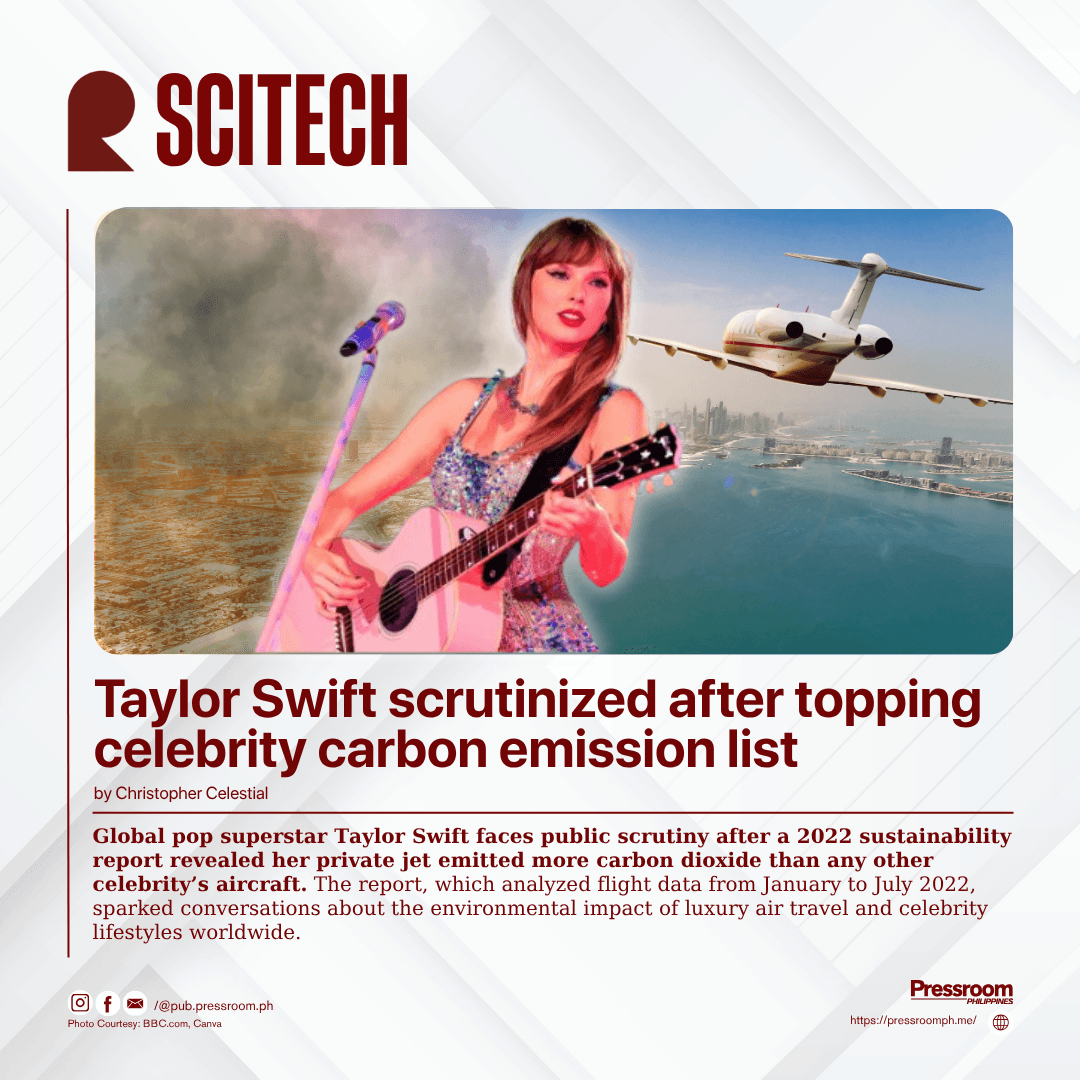Global pop superstar Taylor Swift faces public scrutiny after a 2022 sustainability report revealed her private jet emitted more carbon dioxide than any other celebrity’s aircraft. The report, which analyzed flight data from January to July 2022, sparked conversations about the environmental impact of luxury air travel and celebrity lifestyles worldwide.
The study, released by UK-based sustainability marketing firm Yard, used data from the Celebrity Jets Twitter account that tracks flight paths using public information. According to the findings, Swift’s jet made 170 flights in just seven months, producing 8,293.54 metric tons of carbon dioxide (CO₂) — about 1,184 times more than the average person’s yearly total. Following the backlash, Swift’s representative clarified that her jet is often loaned to other individuals, and not all trips were personally hers.
Environmental experts note that this issue extends beyond one celebrity—it highlights how private jets contribute disproportionately to global carbon emissions. As the world faces worsening climate change, the discussion emphasizes the importance of sustainable travel even among the wealthy and influential.
Tracking the Science Behind Jet Emissions
Aviation emissions are calculated using fuel-burn data, distance traveled, and aircraft type. When jet fuel combusts, it releases carbon dioxide (CO₂), nitrogen oxides (NOₓ), and water vapor, all contributing to the greenhouse effect. Scientists estimate that private jets emit up to 14 times more CO₂ per passenger than commercial aircraft because they carry fewer passengers but burn large amounts of fuel.
The International Council on Clean Transportation (ICCT) also reported that although they are used by less than 1% of people globally, private aviation accounts for 4% of total aviation emissions. With each flight releasing hundreds of kilograms of CO₂, frequent short trips quickly add up to thousands of tons per year.
Researchers and environmentalists use this data to raise awareness about the unequal carbon burden—showing how individual luxury behaviors can have planetary-scale consequences.
Influence of Fame on Climate Awareness
Taylor Swift’s inclusion in the carbon emissions list sparked debate across media platforms. While some criticized her, others used the opportunity to promote sustainable celebrity travel and carbon offsetting programs. Fans began discussing ways entertainers could reduce emissions during tours—by using electric vehicles, renewable-powered stages, or partnering with eco-friendly airlines.
The incident also encouraged discussions on environmental transparency among public figures. Experts from the University of Leeds argue that celebrity influence can be repurposed to promote positive environmental behavior if paired with genuine advocacy.
Cultural analysts say the controversy reflects a modern paradox: celebrities who inspire millions can either worsen or help fight the climate crisis depending on their actions and example.
The Environmental Cost of Private Jet Travel
Private jets are among the most carbon-intensive modes of transport. Each hour of flight emits around two metric tons of CO₂, depending on jet size and distance. Unlike commercial flights that distribute emissions across hundreds of passengers, private jets concentrate them on just a few, amplifying per-person pollution.
According to the International Energy Agency (IEA), the aviation sector contributes about 2.5% of global CO₂ emissions. While that figure seems small, high-altitude emissions have a stronger warming effect. Scientists from NASA found that contrails (thin clouds formed from jet exhaust) can trap heat, further intensifying global warming.
Environmental advocates have urged governments to regulate private air travel more strictly through carbon taxes and sustainable fuel mandates, while encouraging the development of cleaner aviation technologies.
Cleaner Skies Ahead: Sustainable Aviation Innovations
Aviation engineers are exploring sustainable aviation fuels (SAF) made from plant oils, waste, or hydrogen to replace fossil-based jet fuel. According to Boeing, SAF can reduce carbon emissions by up to 80% over a fuel’s lifecycle. However, production remains expensive and supply remains limited.
Companies like Airbus and ZeroAvia are testing hydrogen-powered aircraft that emit only water vapor, aiming for commercial use by the 2030s. While still experimental, these technologies represent a promising step toward carbon-neutral air travel.
Experts stress that technological progress must be accompanied by behavioral change. Reducing unnecessary private flights, using high-speed rail, or offsetting emissions through reforestation projects can all help lessen aviation’s environmental impact.
Taylor Swift’s inclusion in the 2022 carbon emission list serves as a reminder that fame and luxury come with environmental responsibilities. Her case sparked a global conversation on how private aviation contributes to climate change and how science and technology can lead the way toward sustainable solutions. As engineers innovate greener skies, society must learn to balance comfort with care for the only planet that sustains us all.




